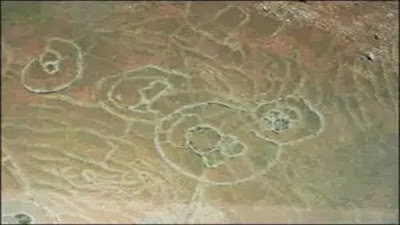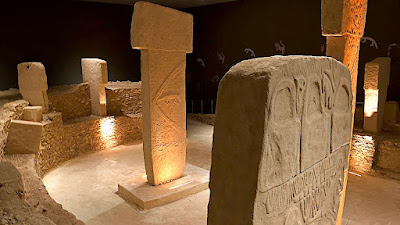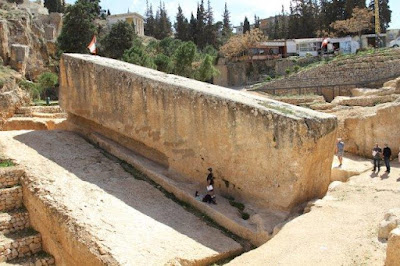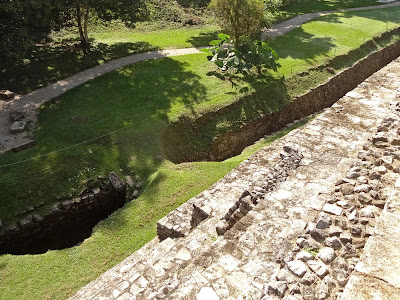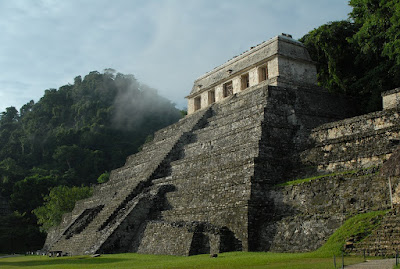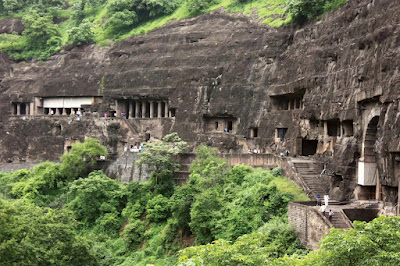An enormous pyramid-like structure in Indonesia may represent the remains of an ancient temple that hid underground for thousands of years. Located atop Mount Padang in West Java, the structure is topped by an archaeological site that was discovered in the early 19th century and holds rows of ancient stone pillars. But the sloping “hill” underneath isn’t part of the natural, rocky landscape; it was crafted by human hands, scientists discovered.
While it may superficially resemble a pyramid, the structure differs from similar pyramids built by the Mayans. While Mayan pyramids tend to be symmetrical, this structure is elongated, with what appears to be a half-circle in the front.
Using ground-penetrating radar surveys, X-ray tomography, 2D and 3D imaging, core drilling, and excavations, researchers gradually uncovered several layers of a sizable structure. It spread over an area of around 15 hectares (150,000 square meters) and had been built up over millennia, with layers representing different periods. At the very top were pillars of basalt rocks framing step terraces, with other arrangements of rock columns “forming walls, paths, and spaces,” the scientists reported at AGU. They estimated this layer to be about 3,000 to 3,500 years old.
Underneath the surface, to a depth of about 10 feet (3 m), was a second layer of similar rock columns, thought to be 7,500 to 8,300 years old. And a third layer, extending 49 feet (15 m) below the surface, is more than 9,000 years old and could even date to 28,000 years ago, according to the researchers. Their surveys also detected multiple chambers underground.
Danny Hilman Natawidjaja, lead project researcher and a senior scientist with the Indonesian Institute of Sciences, thinks Gunung Padang may be the oldest pyramid still standing on Earth. He and his colleagues suspected that the exposed megalith might be more than it appeared, because some partly exposed features in the existing archaeological site didn’t quite match the standing stones. The “peculiar” shape of the hill also stood out from the landscape, he said.
Today, local people still use the exposed site at the top of the structure as a sacred destination for prayer and meditation, and this could also be how it was used thousands of years ago, Natawidjaja said. However, the purpose of the pyramid remains a mystery, as does whether there is a tomb at its heart.
Gunung Padang has been an ancient pyramid hiding underneath a mountain in Indonesia for millennia. It looks like a large hill covered in broken columns of ancient volcanic rock, a kind of prehistoric graveyard where all the tombstones have been knocked down. For many years, archeologists thought the site was an ancient megalithic site, the remains of some stone monument prehistoric peoples had cobbled together on raised ground for a purpose lost to time.
While it was the largest megalithic site in Indonesia, it wasn’t nearly as significant as those in other places, and its stones weren’t the oldest; they were dated to around 2,500 years ago. Interest in the site was limited — that is, until 2010 when Danny Hilman Natawidjaja arrived on the scene.
Hilman thought there was more to the site than anyone suspected — and he was going to prove it. Using careful excavations and remote sensing techniques like ground-penetrating radar and seismic tomography, he and his team got to work.
The majority of the 100-meter hill is man-made, and it’s not actually a hill at all. It’s a terraced pyramid built up over millennia by the oldest civilizations the region has ever known. Natawidjaja and his team began uncovering layer after layer of the structure, each one revealing more about the incredible feat of engineering that created it.
The bottom layer, buried beneath several meters of soil and rock, is thought to be more than 28,000 years old. If that date is accurate, it would mean the pyramid was built during the last Ice Age, when the region was still a lush tropical paradise. That makes it more than twice as old as the oldest known pyramid in Egypt, and nearly as old as the last glacial maximum, the coldest and most severe period of the Ice Age.
As Natawidjaja and his team worked their way up through the layers of the pyramid, they found evidence of more recent civilizations that had built on top of the older layers. The second layer, dating to around 8,000 years ago, showed signs of being heavily modified and possibly used for religious or spiritual purposes. The third layer, built around 3,000 years ago, was even more complex, with intricate terraces, staircases, and rooms built into the pyramid itself.
The topmost layer, which is exposed to the air, was built by the Sundanese civilization around 2,500 years ago. It consists of a series of stone pillars and terraces, and is thought to have been used for religious ceremonies and possibly even as an astronomical observatory.
As the team continued their excavations, they discovered evidence of multiple chambers and tunnels beneath the surface of the pyramid. Some of these chambers are thought to be burial chambers, while others may have been used for ritual purposes. The team also found evidence of water channels and reservoirs, suggesting that the pyramid may have been designed to channel water for agricultural purposes.
Despite all this evidence, there is still much we don’t know about the pyramid at Gunung Padang. We don’t know who built it, or why, or even what it was used for. Some have suggested that it may have been a temple or a tomb, while others believe it was an ancient power plant or even a UFO landing pad.
Whatever its purpose, the pyramid at Gunung Padang is an incredible achievement of ancient engineering and a testament to the ingenuity and creativity of our distant ancestors. As Natawidjaja and his team continue to work on the site, we can only imagine what other secrets it may reveal about the forgotten history of our planet.

















